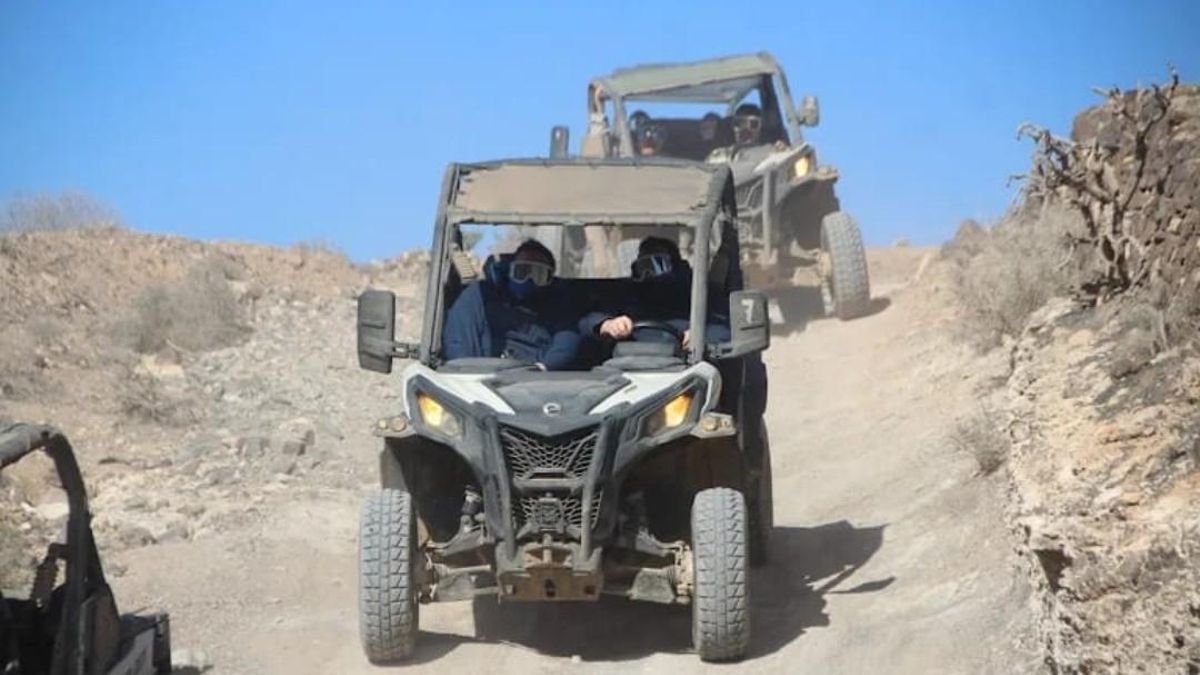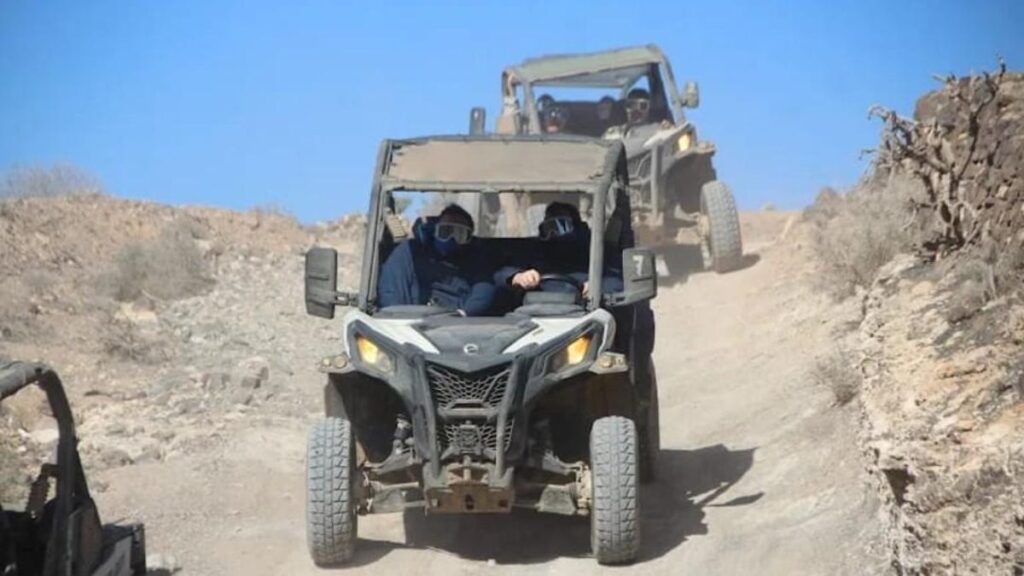A Cloud of Conflict in Guatiza
A thick cloud of dust envelops the village of Guatiza, a small town of fewer than a thousand inhabitants in the north of Lanzarote. The source of the dust storm is a caravan of six buggies carrying tourists along a dirt track. This scene repeats itself multiple times a day, every week, every month, and is replicated in other areas of the island. Although these excursions through natural areas are prohibited, this tourist attraction continues to be offered, pushing residents to their limit. “When tourism can no longer coexist with the population, a serious problem is created,” assert the residents of Guatiza.
The Allure of the Off-Road Adventure
Online advertisements paint an enticing picture: “Drive through the dunes of Lanzarote with this buggy tour,” “Navigate stunning landscapes, pristine beaches, and villages like Guatiza,” and “Explore the incredible El Cuervo volcano and take amazing photos at the Las Grietas volcanic formation.” For just over one hundred euros, you can drive these vehicles for three hours across various parts of the island.
A Resident’s Plea for Sustainable Policies
“We know tourism is important, but we need our politicians to properly grasp the concept of sustainability and apply it,” states Nayra, a local resident. She and other residents in northern Lanzarote have demanded that the Teguise Town Council, the municipality where this activity persists, comply with regulations and set limits to reduce its impact on their quality of life. “It affects us in different ways. The routes pass through protected and agricultural areas and violate local ordinances. The pressure on the soil alters crops and the local fauna. There is no monitoring, no penalties,” the neighbour criticizes.
The Unrelenting Noise and Dust
Adding to these damages is significant noise pollution. “There is no time restriction. They can pass through as late as eleven at night. Elderly people who need their rest are affected. Recently, with the heat and the calima [haze], combined with the buggies… the amount of dust kicked up has been beastly,” Nayra details.
Official Stance: The Activities Are Illegal
The Lanzarote Island Council (Cabildo) has sent a report to all town councils warning them that this type of excursion is not permitted on rustic land, according to the Island Planning Plan and the Canary Islands Land Law. “There is no officially approved network of routes for this type of activity, and until that happens, the circulation of vehicles in caravan through natural areas is prohibited,” stated the island’s Minister of Territorial Policy, Jesús Machín Tavío, in a communiqué. The minister has asked municipalities to tighten control over these activities, which “generate a negative environmental impact and deteriorate agricultural and livestock paths.”
“They can drive on asphalt, but not through sensitive areas or traditional paths that town councils work hard to maintain and which these vehicles destroy by driving over them,” affirmed the council official. According to the island corporation, these activities “represent a serious impact on the natural environment due to the noise and dust they generate, especially in protected areas or those with relevant landscape and ecological value, and can lead to sanctioning procedures.” This summer, environmental agents detected a caravan of quads driving irregularly on the border of the Los Ajaches Natural Monument, located in the south of the island and part of the Canary Islands Network of Protected Natural Areas.
Political Inaction and Public Consultation
When questioned, the Teguise Town Council has not announced immediate measures to regulate this activity. The council, governed by Coalición Canaria and the Partido Popular, has defended its commitment “to protecting the environment and the quality of life of neighbours.” They justify their position by stating, “We have made a public consultation process available on our website so that all interested parties can contribute their ideas and suggestions for modifying the municipal ordinance that regulates this type of activity on rustic land.” They added that this initiative seeks to “guarantee a balance between tourist activity and the preservation of our natural spaces, as well as strengthen citizen participation in decision-making that affects the municipality.” However, no immediate regulatory actions have been announced.
Threats to a Protected Bird Sanctuary
This tourist attraction impacts not only the quality of life of residents but also threatened species for which Lanzarote is one of their few refuges. One of the routes used by these vehicles crosses the Llanos de La Corona and Tegala Grande, a Special Protection Area for Birds (ZEPA). This enclave covers 27.5 square kilometres and spans six municipalities. It is home to birds such as the houbara bustard, the Canarian raven, the stone-curlew, and Eleonora’s falcon.
In this same area in 2023, two British women had a buggy accident while touring Las Roferas, a space coveted by visitors for photos due to its unique geological features. The mother, 61, died that same day, and her daughter passed away four days later in the hospital.
An Ecological Nonsense in a Biosphere Reserve
“That this type of activity is practiced on an island declared a UNESCO Biosphere Reserve is nonsense,” emphasizes Alberto Ucero, a Doctor of Ecology at the National Museum of Natural Sciences. The researcher has spent years studying the houbara bustard, an endangered species. “We have several studies that determine that houbaras do not use areas near heavily trafficked dirt tracks during feeding and reproduction periods precisely because of the disturbances generated by these activities, which are also a potential mortality factor,” he explains. The researcher reports that houbaras have been found run over on dirt tracks.
“This leads to these zones being excluded from their usable habitat, progressively reducing the space for their normal activities, influencing breeding, feeding, reproduction, and nesting,” he stresses. Ucero insists these are species “very sensitive to human activity.” “They are not accustomed to noise and see it as a threat.” For the researcher, existing regulations are sufficient, “but political will is lacking.”


